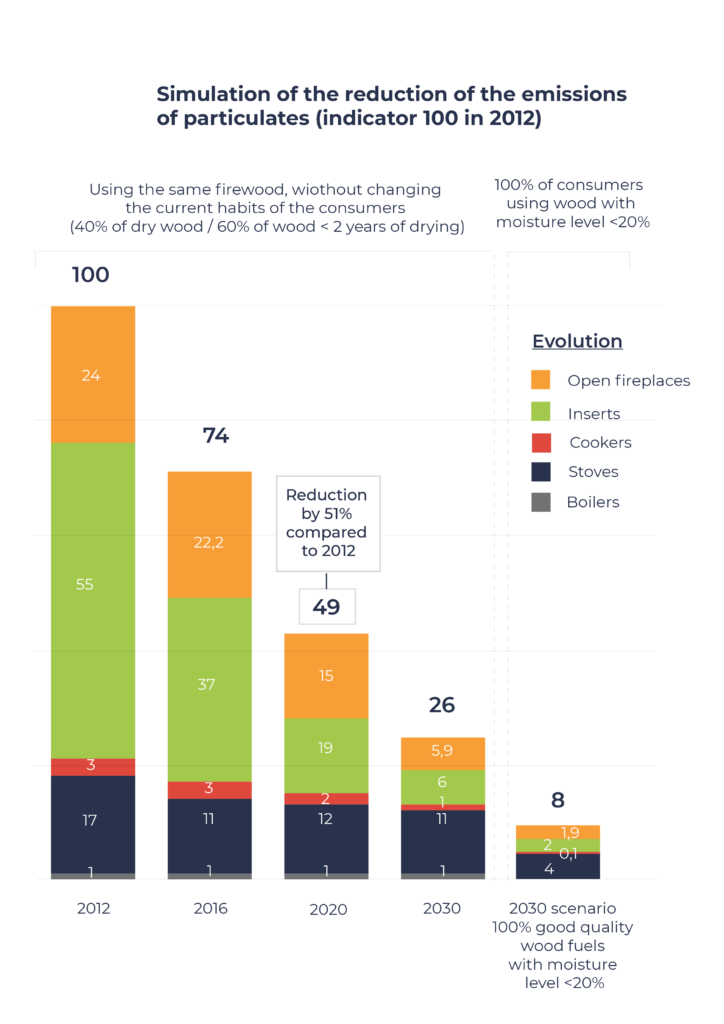Heating and Air Quality: two sides of the same coin
Addressing air pollution is a challenging task and requires an integrated approach that carefully looks at the sources of pollution, the available solutions, and innovative technologies that can foster the decarbonisation of highly emitting sectors. Efforts to improve air and environmental quality are needed to improve the health and quality of life of all citizens, but also to mitigate the impact on environment and climate change.
Along with transport and industry, the heating sector is considered one of the most difficult sectors to decarbonise. When it comes to heating in Europe, it is important to analyse the link between the heating system and its impact on air quality.
Foster the phase out of fossil fuels
Promote penetration of renewable solutions
Privilege cost-effective solutions
Support the replacement of old and inefficient heating appliances

Decarbonisation & Modernisation of the heating system
The EU’s building stock is characterized by old and inherently inefficient heating systems, the negative externalities of which require immediate attention. A coherent energy transition, through the accelerated replacement of old, polluting technologies with modern, highly efficient renewable ones, means ensuring a greener and healthier future.
While around 50 % of PM2.5 emissions are emitted by individual heating systems, the harmfulness of air pollutants is largely dependent on their concentration within a certain area. Urban areas are the most touched by harmful air pollution, most often due to very dense road traffic. Conversely, residential wood combustion occurs mostly in rural and sparsely populated areas, with a much more dispersed concentration: policies to limit emissions should focus on urban areas, the hotspots of air pollution and therefore the biggest threat to our health.
If residential biomass combustion is a contributor to PM emissions in Europe, not all stoves are alike. Old stoves and open fires pollute much more than a modern wood appliance. Old stoves are part of the problem, new stoves are part of the solution. When compared to modern appliances, old stoves and boilers release much larger quantities of dust and other pollutants into the atmosphere while showing a low energetic efficiency (as low as 30 %) due to their incomplete combustion processes.
Today’s technology in contrast is able to drastically boost the efficiency of stoves (up to 95 % for a pellet stove) as well as lower emissions by 95 % compared to an old stove. This leaves room for an impressive potential for improvement of air pollution from the residential biomass sector.
Air Quality
Air pollution is considered one of the major challenges in Europe. In its latest 2030 Climate Target Plan, the European Commission proposes to tackle the issue by reaching a reduction of emissions of 60 % compared to 2015.
Today, an integrated approach to the problem is needed. Modern biomass appliances and biomass-based networks are already part of the solution and can further contribute to Europe’s fight against pollution as their emissions are substantially lower: they emit 287 time less PM compared to traditional open fires.
A case study realized by CERIC in France demonstrates that replacing the old stock of appliances will significantly slash PM emissions. The study simulates the evolution of emissions up to 2030, based on the current replacement rate of domestic wood appliances through dedicated support schemes, and predicts an increase in the domestic wood stoves stock from 7,4 to 9 million between 2012 to 2030 while PM emissions will drop by 74 %.


